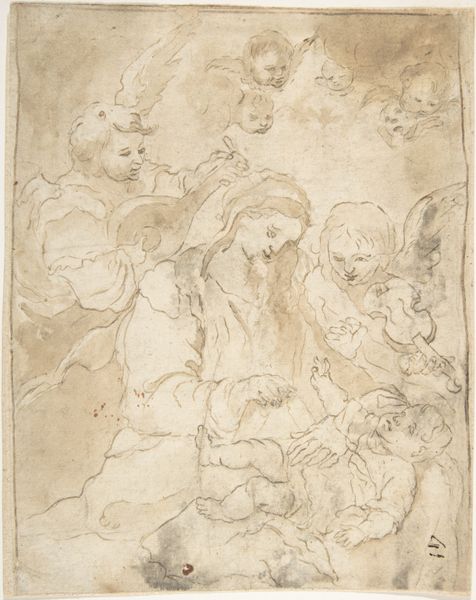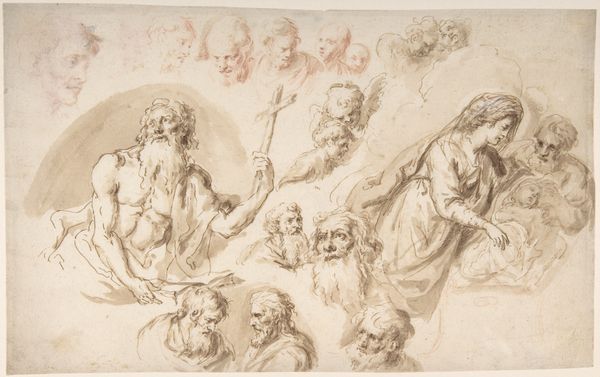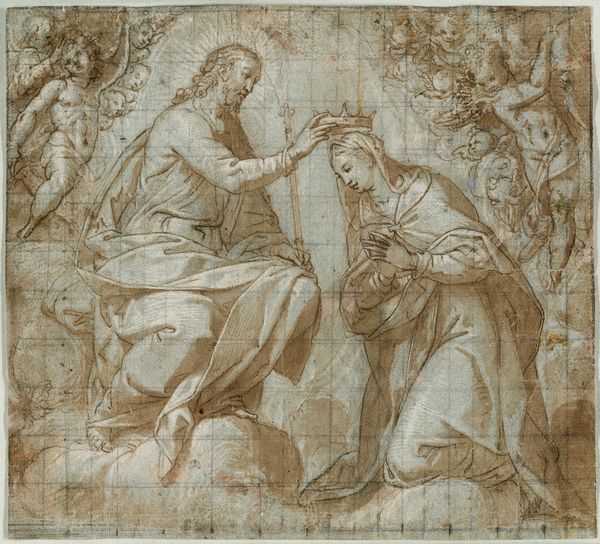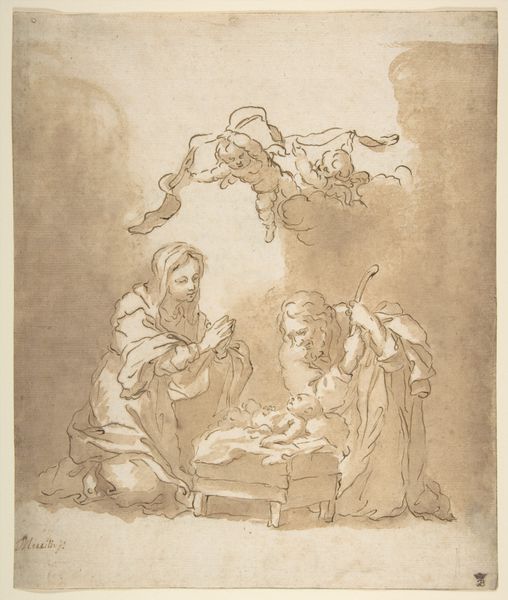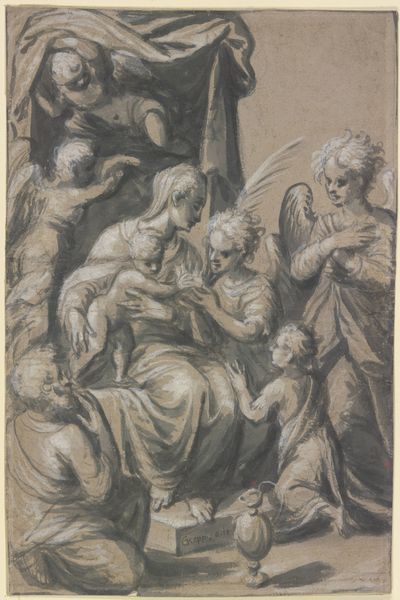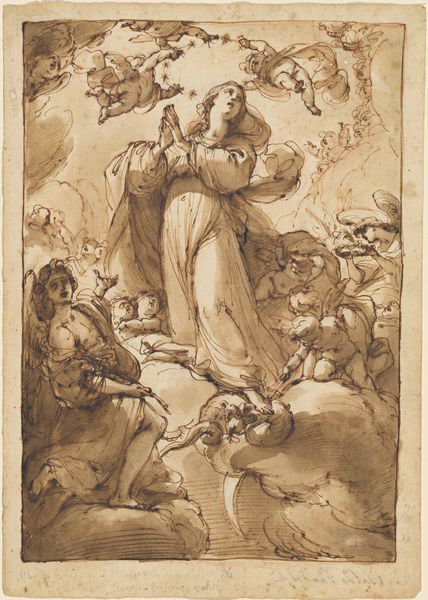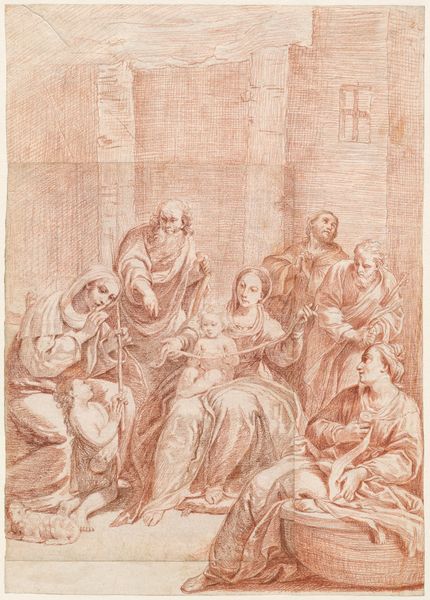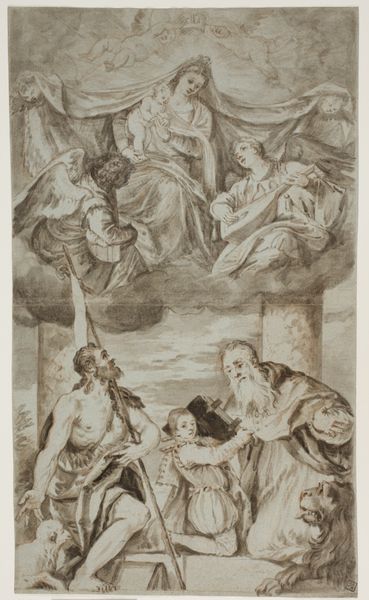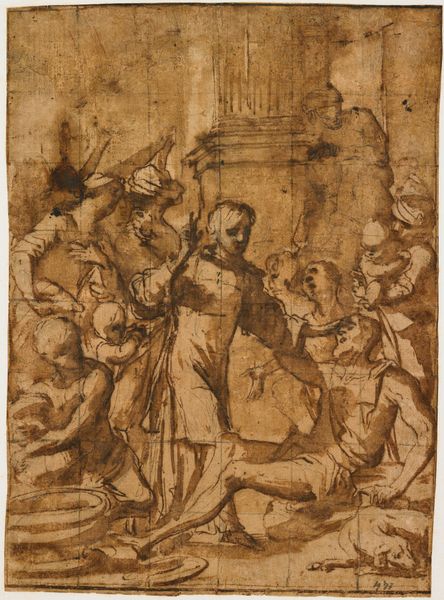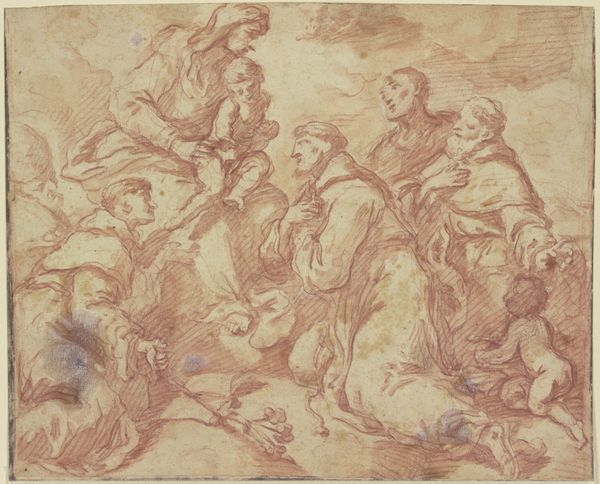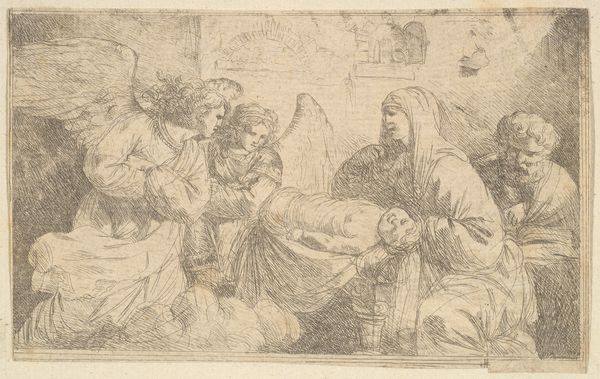
Madonna and Child with Saint John, Saint Anne, and Two Angels in Adoration 1635 - 1709
0:00
0:00
drawing, print
#
drawing
# print
#
pencil sketch
#
charcoal drawing
#
possibly oil pastel
#
madonna
#
charcoal art
#
oil painting
#
child
#
acrylic on canvas
#
coffee painting
#
underpainting
#
portrait drawing
#
watercolor
#
angel
Dimensions: 10 7/16 x 15 1/2in. (26.5 x 39.4cm)
Copyright: Public Domain
Curator: Here, we’re looking at a drawing titled “Madonna and Child with Saint John, Saint Anne, and Two Angels in Adoration,” likely created between 1635 and 1709 by Francesco Stringa. Editor: My immediate impression is that of dynamic religious fervour, even captured in what appears to be an unfinished sketch. Curator: That energetic quality stems from Stringa’s exploration of idealized femininity, motherhood, and sainthood, filtered through a lens of contemporary societal expectations for women and the concept of devotion. The swooning poses could easily be interpreted as performances of virtue. Editor: I see that virtue through very specific, symbolic representations. For instance, Mary sits enthroned on the crescent moon, a long-established emblem of the Virgin, adopted from depictions of the Immaculate Conception and Queen of Heaven. Curator: The depiction of Saint Anne is also crucial; the relationship between Anne, Mary, and Jesus can be considered as a nexus of female strength across generations, but that is, of course, a modern reading, one that perhaps Stringa wasn’t consciously pursuing. Editor: I wonder, given how active the figures are, if they're not just reacting to a vision but almost enacting a prophecy, the divine becoming palpably real. Notice the urgency in their postures as they reach out and bow. Curator: Right, there's definitely a narrative tension embedded in those gestures. Also consider, how were women of the period receiving this type of imagery? As models, as aspirations, or as confirmations of their subservient roles within a divinely ordained structure? Editor: Or perhaps both? But what endures for me is how the artist manages to capture such potent and immediately legible iconography, distilled into a simple monochromatic study. It testifies to the power of shared cultural symbolism. Curator: Indeed, that power to endure. It also compels us to ask: What of this representation of devotion, of womanhood, still resonates, and what demands reimagining to address present-day injustices and celebrate lived experiences? Editor: A fascinating artwork, that has me thinking of all the ways sacred symbology impacts our experiences and perceptions today.
Comments
No comments
Be the first to comment and join the conversation on the ultimate creative platform.
